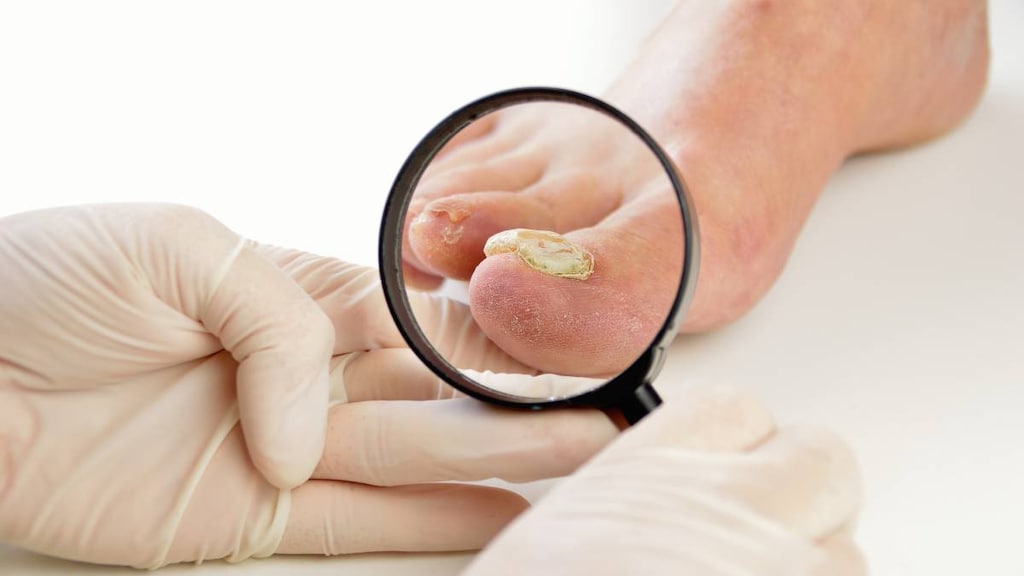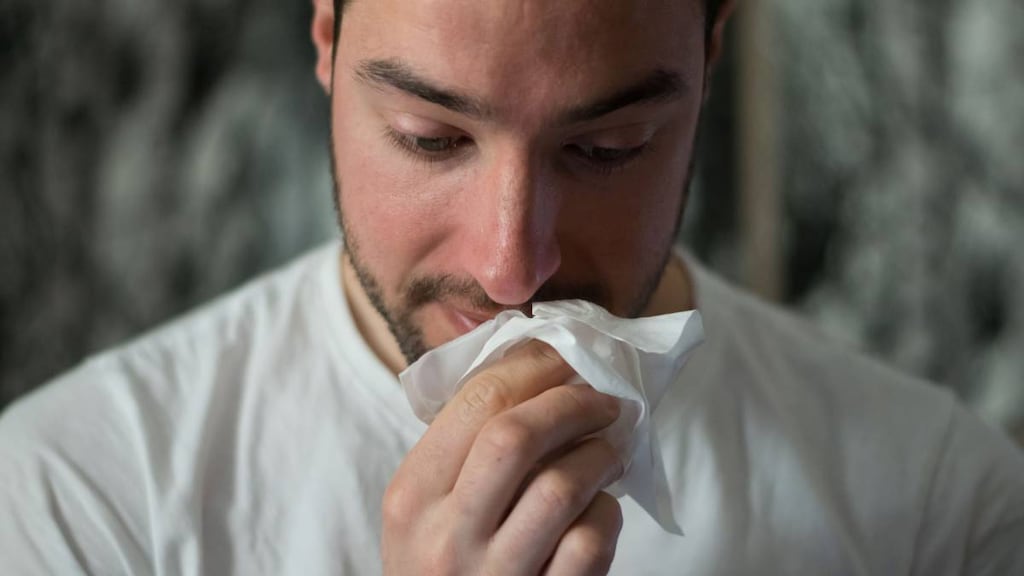Dosage Forms
Excipient information presented when available (limited, particularly for generics); consult specific product labeling. [DSC] = Discontinued product
Cream, External, as acetate:
MiCort-HC: 2.5% (4 g [DSC], 28.4 g) [contains butylparaben, cetostearyl alcohol, propylparaben]
Cream, External, as base:
Ala-Cort: 1% (28.4 g, 85.2 g [DSC]); 2.5% (30 g) [contains cetyl alcohol, propylene glycol]
Anti-Itch Maximum Strength: 1% (28 g) [contains cetyl alcohol, methylparaben]
Anti-Itch Maximum Strength: 1% (28 g) [contains cetyl alcohol, methylparaben, propylene glycol, propylparaben]
CareAll Hydrocortisone Ant-Itc: 1% (28 g) [contains cetyl alcohol, chlorocresol (chloro-m-cresol), propylene glycol]
Cortaid Maximum Strength: 1% (14 g [DSC], 28 g) [contains cetyl alcohol, disodium edta, ethylparaben, methylparaben, propylparaben]
Curad Hydrocortisone: 1% (1.5 g, 28.4 g) [latex free; contains methylparaben, polysorbate 80, propylene glycol, propylparaben]
Hydrocortisone Max St: 1% (28.4 g)
Hydrocortisone Max St/12 Moist: 1% (28.4 g) [contains cetearyl alcohol, methylparaben, propylene glycol, propylparaben]
HydroSKIN: 1% (28 g [DSC]) [contains methylparaben, propylene glycol, propylparaben]
Instacort 5: 0.5% (28.4 g)
Med-Derm Hydrocortisone: 0.5% (30 g [DSC]); 1% (30 g [DSC])
Medi-First Hydrocortisone: 1% (1 ea [DSC]) [contains trolamine (triethanolamine)]
Preparation H: 1% (26 g) [contains cetyl alcohol, edetate disodium, methylparaben, propylene glycol, propylparaben, sodium benzoate]
Recort Plus: 1% (30 g)
Generic: 0.5% (15 g, 28.35 g, 28.4 g); 1% (1 g, 1.5 g, 14.2 g, 20 g, 28 g, 28.35 g, 28.4 g, 30 g, 120 g [DSC], 453.6 g, 454 g); 2.5% (20 g, 28 g, 28.35 g, 30 g, 453.6 g, 454 g)
Cream, Rectal, as base:
Anusol-HC: 2.5% (30 g)
Procto-Med HC: 2.5% (28 g, 30 g) [contains cetearyl alcohol, methylparaben, propylene glycol, propylparaben]
Procto-Pak: 1% (28.4 g)
Proctocort: 1% (28.4 g) [contains cetyl alcohol, propylene glycol]
Proctosol HC: 2.5% (28.35 g)
Proctozone-HC: 2.5% (30 g)
Proctozone-HC: 2.5% (30 g) [contains cetearyl alcohol, methylparaben, propylene glycol, propylparaben]
Generic: 1% (28.4 g); 2.5% (30 g)
Cream, External, as butyrate:
Locoid: 0.1% (15 g, 45 g) [contains butylparaben, propylparaben]
Locoid Lipocream: 0.1% (45 g, 60 g) [contains butylparaben, cetostearyl alcohol, propylparaben]
Generic: 0.1% (15 g, 45 g, 60 g)
Cream, External, as probutate:
Pandel: 0.1% (80 g) [contains butylparaben, methylparaben, propylene glycol]
Cream, External, as valerate:
Generic: 0.2% (15 g, 45 g, 60 g)
Enema, Rectal, as base:
Colocort: 100 mg/60 mL (60 mL)
Cortenema: 100 mg/60 mL (60 mL) [contains methylparaben, polysorbate 80]
Generic: 100 mg/60 mL (60 mL)
Foam, Rectal, as acetate:
Cortifoam: 10% [90 mg/applicatorful] (15 g) [contains cetyl alcohol, methylparaben, propylene glycol, propylparaben, trolamine (triethanolamine)]
Gel, External, as base:
Corticool: 1% (42.53 g [DSC]) [contains cremophor el, propylene glycol]
Kit, External, as base:
Advanced Allergy Collection: 2.5% [contains cetyl alcohol, methylparaben, propylene glycol, propylparaben]
Dermasorb HC: 2% [DSC] [contains menthol, methylparaben, propylene glycol, propylparaben]
Pediaderm HC: 2% [DSC] [contains benzalkonium chloride, cetyl alcohol, isopropyl alcohol, methylparaben, propylene glycol, propylparaben]
Scalacort DK: Hydrocortisone lotion 2% and Sal Acid 2% and sulfur 2% [contains benzalkonium chloride, isopropyl alcohol, methylparaben, propylene glycol, propylparaben, soybean lecithin]
Lotion, External, as acetate:
NuCort: 2% (60 g) [contains benzyl alcohol, cetyl alcohol, menthol, trolamine (triethanolamine)]
Lotion, External, as base:
Ala Scalp: 2% (29.6 mL) [contains benzalkonium chloride, isopropyl alcohol, propylene glycol]
Aquanil HC: 1% (120 mL)
Beta HC: 1% (60 mL)
HydroSKIN: 1% (118 mL) [contains benzyl alcohol, cetyl alcohol, propylene glycol]
Rederm: 1% (120 mL [DSC])
Sarnol-HC: 1% (59 mL)
Scalacort: 2% (29.6 mL [DSC]) [contains benzalkonium chloride, isopropyl alcohol, propylene glycol]
Generic: 1% (114 g, 120 mL); 2.5% (59 mL, 118 mL)
Lotion, External, as butyrate:
Locoid: 0.1% (59 mL, 118 mL) [contains butylparaben, cetostearyl alcohol, propylparaben]
Generic: 0.1% (59 mL, 118 mL)
Ointment, External, as base:
Hydrocortisone in Absorbase: 1% (110 g [DSC])
Generic: 0.5% (28 g, 28.35 g, 30 g); 2.5% (20 g, 28.35 g, 453.6 g, 454 g); 1% (25 g [DSC], 28 g, 28.35 g, 28.4 g, 30 g, 110 g [DSC], 430 g [DSC], 453.6 g)
Ointment, External, as base [preservative free]:
Hydrocortisone in Absorbase: 1% (110 g)
Ointment, External, as butyrate:
Locoid: 0.1% (15 g [DSC], 45 g [DSC])
Generic: 0.1% (15 g, 45 g)
Ointment, External, as valerate:
Westcort: 0.2% (15 g [DSC], 45 g [DSC], 60 g [DSC]) [contains propylene glycol]
Generic: 0.2% (15 g, 45 g, 60 g)
Solution, External, as base:
Scalpicin Maximum Strength: 1% (44 mL) [contains disodium edta, menthol, propylene glycol]
Texacort: 2.5% (30 mL) [lipid free, paraben free; contains alcohol, usp]
Solution, External, as butyrate:
Locoid: 0.1% (60 mL) [contains isopropyl alcohol]
Generic: 0.1% (20 mL, 60 mL)
Suppository, Rectal, as acetate:
Anucort-HC: 25 mg (1 ea, 12 ea, 24 ea, 100 ea)
Anusol-HC: 25 mg (12 ea, 24 ea)
Hemmorex-HC: 25 mg (12 ea, 24 ea); 30 mg (12 ea [DSC])
Proctocort: 30 mg (12 ea)
Generic: 25 mg (12 ea, 24 ea, 100 ea); 30 mg (12 ea)
Pharmacology
Mechanism of Action
Topical corticosteroids have anti-inflammatory, antipruritic, and vasoconstrictive properties. May depress the formation, release, and activity of endogenous chemical mediators of inflammation (kinins, histamine, liposomal enzymes, prostaglandins) through the induction of phospholipase A2 inhibitory proteins (lipocortins) and sequential inhibition of the release of arachidonic acid. Hydrocortisone has low to intermediate range potency (dosage-form dependent).
Pharmacokinetics/Pharmacodynamics
Absorption
Topical corticosteroids are absorbed percutaneously. The extent is dependent on several factors, including epidermal integrity (intact vs abraded skin), formulation, and the use of occlusive dressings. Percutaneous absorption of topical steroids is increased in neonates (especially preterm neonates), infants, and young children. Rectal absorption is more substantial than most topical preparations; therefore, systemic effects are more common.
Metabolism
Hepatic
Excretion
Urine (major); bile
Use: Labeled Indications
Anal and genital pruritus, external: Topical: Use in external genital and anal itching.
Corticosteroid-responsive dermatoses (eg, atopic dermatitis, contact dermatitis, vulvar dermatitis, psoriasis, seborrheic dermatitis): Topical: Relief of inflammatory and pruritic manifestations of corticosteroid-responsive dermatoses.
Hemorrhoids: Rectal: Use in inflamed hemorrhoids.
Ulcerative colitis: Rectal: Treatment of ulcerative colitis, especially distal forms, including ulcerative proctitis, ulcerative proctosigmoiditis, and left-sided ulcerative colitis.
Use: Off Label
Stasis dermatitisc
Clinical experience suggests the utility of topical hydrocortisone (a mid-potency formulation) in the management of stasis dermatitis Fransway 2019.
Vaginitis, desquamative inflammatoryc
Clinical experience suggests the utility of hydrocortisone cream (prepared by a licensed compounding facility) administered intravaginally in the treatment of desquamative inflammatory vaginitis Sobel 2011, Sobel 2019.
Contraindications
Hypersensitivity to hydrocortisone or any component of the formulation; systemic fungal infections and ileocolostomy during the immediate or early postoperative period (rectal suspension); obstruction, abscess, perforation, peritonitis, fresh intestinal anastomoses, extensive fistulas, and sinus tracts (rectal foam).
OTC labeling: When used for self-medication, do not use for the treatment of diaper dermatitis.
Documentation of allergenic cross-reactivity for corticosteroids is limited. However, because of similarities in chemical structure and/or pharmacologic actions, the possibility of cross-sensitivity cannot be ruled out with certainty.
Dosage and Administration
Dosing: Adult
Note:
Potency: The potency classifications of topical hydrocortisone products are provided in the table. In general, start with the lowest-potency agent appropriate for the condition severity and application site. Vehicle, concentration, site of application, use of occlusive dressings, and other factors can alter potency.
|
Hydrocortisone |
Vehicle |
Strength |
Potency (According to the US Classification System) |
|---|---|---|---|
|
1Goldstein 2019; Tadicherla 2009. |
|||
|
Valerate |
Ointment |
0.2% |
Medium (group 4) |
|
Butyrate |
Cream, Lotion, Ointment, Solution |
0.1% |
Lower-mid (group 5) |
|
Probutate |
Cream |
0.1% |
Lower-mid (group 5) |
|
Valerate |
Cream |
0.2% |
Lower-mid (group 5) |
|
Acetate |
Cream, Lotion |
2%, 2.5% |
Least potent (group 7) |
|
Base |
Cream, Gel, Lotion, Ointment, Solution, Spray |
0.5%, 1%, 2%, 2.5% |
Least potent (group 7) |
Table has been converted to the following text.
Potency according to the US Classification System:
Valerate: Ointment: 0.2%: Medium potency (group 4).
Butyrate: Cream, lotion, ointment, solution: 0.1%: Lower-mid (group 5).
Probutate: Cream: 0.1%: Lower-mid (group 5).
Valerate: Cream: 0.2%: Lower-mid (group 5).
Acetate: Cream, lotion: 2%, 2.5%: Least potent (group 7).
Base: Cream, gel, lotion, ointment, solution, spray: 0.5%, 1%, 2%, 2.5%: Least potent (group 7).
1Goldstein 2019; Tadicherla 2009.
In the management of corticosteroid-responsive dermatoses, lower-potency agents are often preferred for sites at increased risk for corticosteroid-induced skin atrophy (eg, face, intertriginous areas). However, use of higher-potency agents in these areas can be appropriate for certain indications when prescribed under the guidance of a dermatologist.
Vehicle: Optimal response depends on choosing a vehicle that is appropriate for body location and lesion characteristics, as well as consideration of patient preference.
Frequency of application: Corticosteroid-responsive dermatoses: Usual: Once or twice daily.
Duration of therapy: Corticosteroid-responsive dermatoses: Topical corticosteroids are generally well tolerated when used appropriately. Treatment courses of ∼2 weeks are common for certain chronic skin conditions; however, longer or repeated intermittent courses can be appropriate, particularly when prescribed under the guidance of a dermatologist. Conversely, a shorter course may be sufficient depending upon response and when used for minor self-limiting skin conditions (Drake 1996; Goldstein 2019; Tadicherla 2009).
Indication-specific dosing:
Anal pruritus (pruritus ani), external (irritant-associated or idiopathic) (adjunct): Note: Use with conservative measures (eg, keeping area clean and dry, removal of offending agents) in patients with significant pruritus. An evaluation for the underlying cause of anal pruritus is essential, as the etiology may be due to an infectious, neoplastic, systemic, or other disease requiring definitive management (Breen 2019).
Hydrocortisone 1% (cream, ointment [base]): Topical: Apply to affected anal area twice daily for up to 2 weeks in conjunction with a barrier cream (eg, zinc oxide); due to risk of skin atrophy, do not use hydrocortisone for >2 weeks (Al-Ghnaniem 2007; Ansari 2016; Breen 2019).
Atopic dermatitis (eczema): Note: Concurrent use of emollients (applied liberally) is recommended (Weston 2019).
Mild disease: Hydrocortisone 2.5% (cream, ointment [base, acetate]), 0.1% (cream, lotion, ointment [butyrate, probutate]), or 0.2% (cream [valerate]): Topical: Apply once or twice daily to affected areas for 2 to 4 weeks (Buys 2007; Weston 2019).
Moderate to severe disease: Hydrocortisone 0.2% (ointment [valerate]): Topical: Apply once or twice daily to affected areas for 2 to 4 weeks (Hoare 2000; Weston 2019); in patients with improvement, maintenance therapy is suggested with an intermittent application once daily for 2 consecutive days per week (eg, weekends) or 2 to 3 times per week to previously affected areas for up to 16 weeks. Note: For areas affecting the face, groin, or other areas with skin folds, lower-potency preparations are generally recommended (unless limited to short-term use [5 to 7 days] and then switched to lower potency) (Eichenfield 2014; Weston 2019).
Contact dermatitis: Note: If condition does not show prompt improvement (eg, within 1 to 2 weeks), reassess diagnosis and choice of treatment; consider evaluation by an experienced specialist (AAAAI/ACAAI 2006).
Allergic contact dermatitis (localized), mild to moderate: Note: If hands, feet, or nonflexural areas are involved, higher-potency topical corticosteroids (not hydrocortisone) are recommended.
Face and/or flexural areas: Hydrocortisone 0.1% (cream, lotion, ointment [butyrate, probutate]) or 0.2% (cream, ointment [valerate]): Topical: Apply once or twice daily to affected areas for 1 to 2 weeks (Brod 2019).
Irritant contact dermatitis (localized), mild to moderate, acute or chronic: Note: In general, ointments are the preferred vehicle.
Face and/or flexural areas: Hydrocortisone 0.1% (cream, lotion, ointment [butyrate, probutate]) or 0.2% (cream [valerate]): Topical: Apply once or twice daily to affected areas for 1 to 2 weeks (Brod 2019).
Genital pruritus, external (due to dermatitis) (adjunct): Note: Use with conservative measures (eg, keeping area clean and dry, removal of offending agents). An evaluation for the underlying cause is essential as the etiology may be due to an infectious, neoplastic, systemic, or other process requiring definitive management (Johnson 2019).
Balanitis: Hydrocortisone 1% (cream, ointment [base]): Topical: Apply to affected area twice daily for 1 to 2 weeks (AGM/MSSVD 1999; Barrisford 2019).
Vulvar dermatitis, mild: Hydrocortisone 0.5% to 2.5% (ointment [base]), 0.1% (ointment [butyrate]), or 0.2% (ointment [valerate]): Topical: Apply to affected area once daily for 2 to 4 weeks; therapy can be continued indefinitely at the minimum frequency for effective control of pruritus (goal <14 days per month). Ointments are preferred (Johnson 2019; van der Meijden 2017).
Hemorrhoids: Note: Use with conservative measures (eg, dietary modifications, warm sitz baths).
Rectal cream (preferred): Hydrocortisone 1% or 2.5%: Apply sparingly, up to twice daily; or
Rectal suppository: Insert 1 suppository (25 or 30 mg) twice daily.
Duration of therapy: Some experts recommend limiting use to ≤1 week due to risk of mucosal thinning (Bleday 2019).
Psoriasis, plaque (limited disease):
Face and/or intertriginous areas: Hydrocortisone 1% to 2.5% (ointment, cream [base, acetate]): Topical: Apply twice daily until lesions resolve; a common treatment course is 2 weeks. (Feldman 2019; Samarasekera 2013).
Seborrheic dermatitis: Note: Administer alone or in combination with a topical antifungal.
Face and/or intertriginous areas: Hydrocortisone 1% to 2.5% (cream, gel, lotion, ointment [base, acetate]): Topical: Apply once or twice daily until symptoms subside (usually 1 to 2 weeks) (Sasseville 2019).
Chest or upper back: Hydrocortisone 0.2% (cream [valerate]): Topical: Apply once or twice daily until symptoms subside (usually 1 to 2 weeks) (Sasseville 2019).
Stasis dermatitis (off-label use): Hydrocortisone 0.2% (ointment [valerate]): Topical: Apply once or twice daily for 1 to 2 weeks; due to risk of skin atrophy and ulceration, avoid prolonged use (Fransway 2019).
Ulcerative colitis, mild to moderately active (alternative agent):
Induction of remission:
Rectal suppository: 1 suppository (25 or 30 mg) once daily, may increase after 2 weeks to 1 suppository twice daily. Note: Use concurrently with either the rectal foam or enemas in patients with proctosigmoiditis (eg, >18 cm involvement) (Hashash 2019).
Rectal foam: 1 applicatorful (90 mg) once or twice daily.
Rectal enema: 1 enema (100 mg/60 mL unit) once or twice daily.
Duration of therapy: Usually 3 to 4 weeks; once improvement is demonstrated, may taper gradually to a nightly regimen (MacDermott 2019).
Vaginitis, desquamative inflammatory (off-label use): Note: An evaluation by an experienced clinician is generally required.
Hydrocortisone 10% cream (10% strength is not commercially available; must be prepared by a licensed compounding facility): Intravaginal: Insert 3 to 5 g intravaginally (via a vaginal applicator) once daily, usually at bedtime; duration of therapy is typically 4 to 6 weeks. Note: For mild disease, particularly if hydrocortisone 10% cream is not available, may consider inserting hydrocortisone 0.5% cream (base) or 1 rectal suppository (25 mg [acetate]) intravaginally twice daily (Sobel 2011; Sobel 2019).
Dosing: Geriatric
Refer to adult dosing.
Dosing: Pediatric
Atopic dermatitis: Infants ≥3 months, Children, and Adolescents: Hydrocortisone butyrate (Locoid Lipocream, Locoid lotion): Topical: Apply a thin film to affected area twice daily; if no improvement within 2 weeks, reassess diagnosis.
Corticosteroid-responsive dermatosis (including psoriasis): Infants, Children, and Adolescents: Hydrocortisone base (cream, ointment), hydrocortisone acetate (2% lotion): Topical: Apply a thin film to affected area 2 to 4 times daily depending on the severity of the condition; may use occlusive dressings to manage psoriasis or recalcitrant conditions
Dermatologic irritation, minor: OTC Labeling: Children ≥2 years and Adolescents: Hydrocortisone base: Topical: Apply to affected area up to 3 to 4 times daily
Anal and genital itching, external: OTC labeling: Children ≥12 years and Adolescents: Hydrocortisone base: Topical: Apply to affected area up to 3 to 4 times daily
Ulcerative colitis, mild to moderate (induction) (Baldassano 1999; Bianchi Porro 1995; ECCO/ESPGHAN [Turner 2012]; NICE 2013; Regan 2014): Children and Adolescents: Limited data available: Rectal enema/suspension: Rectal: One enema (100 mg) once or twice daily (Baldassano 1999). Once daily administration in the evening for 3 weeks was used in 52 adolescent and adult patients (age range: 16 to 67 years) in a randomized, double blind study comparing hydrocortisone enemas to rectal suspension of 5-aminosalicylic acid (Bianchi Porro 1995)
Administration
Topical products: Cream, gel, lotion, ointment, solution, spray: In general, for optimal absorption, apply topical corticosteroids to moist skin immediately after bathing or after wet soaks. Occlusive dressings will also enhance drug absorption, often by a factor of 10 (Goldstein 2019). Occlusive dressing may be used if instructed by a health care professional. Shake lotion well before use.
Rectal products:
Rectal foam: Shake vigorously for 5 to 10 seconds prior to use. Do not remove cap during use. Hold container upright to fill applicator. Gently insert applicator tip into anus. Only use applicator provided by manufacturer; do not insert any part of the aerosol container in the anus. Clean applicator after each use with warm water.
Rectal suppository: Remove foil from rectal suppository and insert pointed end first. Avoid handling unwrapped suppository for too long.
Rectal suspension: Shake bottle well. Remove protective sheath from applicator tip. Lie on left side with left leg extended and right leg flexed forward. Gently insert lubricated applicator tip into rectum, pointed slightly toward navel. Grasp bottle firmly and squeeze slowly to instill the medication. After administering, withdraw and discard the used unit. Remain in position for at least 30 minutes. Retain the enema all night if possible.
Storage
Store at 20°C to 25°C (68°F to 77°F). Protect from heat and freezing.
Foam: Contents are under pressure; do not burn or puncture the container; do not store at temperatures above 48.9°C (120°F).
Drug Interactions
Aldesleukin: Corticosteroids may diminish the antineoplastic effect of Aldesleukin. Avoid combination
Calcipotriene: Hydrocortisone (Topical) may diminish the therapeutic effect of Calcipotriene. Management: Monitor for reduced calcipotriene efficacy if combined with hydrocortisone valerate. Consider separating the administration of these agents by 10 to 12 hours to minimize the risk of this potential interaction. Monitor therapy
Corticorelin: Corticosteroids may diminish the therapeutic effect of Corticorelin. Specifically, the plasma ACTH response to corticorelin may be blunted by recent or current corticosteroid therapy. Monitor therapy
Deferasirox: Corticosteroids may enhance the adverse/toxic effect of Deferasirox. Specifically, the risk for GI ulceration/irritation or GI bleeding may be increased. Monitor therapy
Hyaluronidase: Corticosteroids may diminish the therapeutic effect of Hyaluronidase. Management: Patients receiving corticosteroids (particularly at larger doses) may not experience the desired clinical response to standard doses of hyaluronidase. Larger doses of hyaluronidase may be required. Consider therapy modification
Ritodrine: Corticosteroids may enhance the adverse/toxic effect of Ritodrine. Monitor therapy
Adverse Reactions
Frequency not defined. Local adverse events presented. Adverse events similar to those observed with systemic absorption are also observed, especially following rectal use. Refer to the Hydrocortisone (Systemic) monograph for details.
Cream, ointment: Dermatologic: Acneiform eruption, atrophic striae, burning sensation of skin, folliculitis, hypertrichosis, hypopigmentation, maceration of the skin, miliaria, perioral dermatitis, pruritus, secondary skin infection, skin atrophy, skin irritation, xeroderma
Enema:
Central nervous system: Localized burning
Hematologic & oncologic: Rectal hemorrhage
Local: Local pain
Suppositories:
Central nervous system: Localized burning
Dermatologic: Allergic contact dermatitis, folliculitis, hypopigmentation, pruritus, xeroderma
Infection: Secondary infection
Warnings/Precautions
Concerns related to adverse effects:
- Adrenal suppression: May cause hypercortisolism or suppression of hypothalamic-pituitary-adrenal (HPA) axis, particularly in younger children or in patients receiving high doses for prolonged periods. HPA axis suppression may lead to adrenal crisis.
- Anaphylactoid reactions: Rare cases of anaphylactoid reactions have been observed in patients receiving corticosteroids.
- Contact dermatitis: Allergic contact dermatitis can occur and is usually diagnosed by failure to heal rather than clinical exacerbation; discontinue use if irritation occurs and treat appropriately.
- Immunosuppression: Prolonged use of corticosteroids may increase the incidence of secondary infection, mask acute infection (including fungal infections), prolong or exacerbate viral infections, or limit response to vaccines. Exposure to chickenpox or measles should be avoided; corticosteroids should not be used to treat ocular herpes simplex. Corticosteroids should not be used for cerebral malaria, fungal infections, or viral hepatitis. Close observation is required in patients with latent tuberculosis and/or tuberculosis reactivity; restrict use in active tuberculosis (only fulminating or disseminated tuberculosis in conjunction with antituberculosis treatment). Amebiasis should be ruled out in any patient with recent travel to tropical climates or unexplained diarrhea prior to initiation of corticosteroids.
- Kaposi sarcoma: Prolonged treatment with corticosteroids has been associated with the development of Kaposi sarcoma (case reports); if noted, discontinuation of therapy should be considered (Goedert 2002).
- Myopathy: Acute myopathy has been reported with high-dose corticosteroids, usually in patients with neuromuscular transmission disorders; may involve ocular and/or respiratory muscles; monitor creatine kinase; recovery may be delayed.
- Psychiatric disturbances: Corticosteroid use may cause psychiatric disturbances, including depression, euphoria, insomnia, mood swings, and personality changes. Preexisting psychiatric conditions may be exacerbated by corticosteroid use.
- Sensitization: Topical use has been associated with local sensitization (redness, irritation); discontinue if sensitization is noted.
- Systemic effects: Topical corticosteroids may be absorbed percutaneously. Absorption of topical corticosteroids may cause manifestations of Cushing syndrome, hyperglycemia, or glycosuria. Absorption is increased by the use of occlusive dressings, application to denuded skin, prolonged use, or application to large surface areas.
Disease-related concerns:
- Cardiovascular disease: Use with caution in patients with heart failure and/or hypertension.
- Diabetes: Use with caution in patients with diabetes mellitus.
- Gastrointestinal disease: Use with caution in patients with GI diseases (diverticulitis, intestinal anastomoses, peptic ulcer, nonspecific ulcerative colitis).
- Hepatic impairment: Use with caution in patients with hepatic impairment, including cirrhosis.
- Myasthenia gravis: Use with caution in patients with myasthenia gravis.
- Myocardial infarction: Use with caution following acute myocardial infarction (MI); corticosteroids have been associated with myocardial rupture.
- Ocular disease: Use with caution in patients with cataracts and/or glaucoma; increased intraocular pressure, glaucoma, and cataracts have occurred with prolonged use.
- Osteoporosis: Use with caution in patients with osteoporosis.
- Renal impairment: Use with caution in patients with renal impairment; fluid retention may occur.
- Thyroid disease: Use caution with thyroid disease. Changes in thyroid status may necessitate dosage adjustments; metabolic clearance of corticosteroids increases in hyperthyroid patients and decreases in hypothyroid ones.
- Ulcerative colitis: With severe ulcerative colitis, it may be hazardous to delay surgery while waiting for response to treatment.
Special populations:
- Elderly: Because of the risk of adverse effects associated with systemic absorption, topical corticosteroids should be used cautiously in elderly patients in the smallest possible effective dose for the shortest duration.
- Pediatric: Children may absorb proportionally larger amounts after topical application and may be more prone to systemic effects. HPA axis suppression, intracranial hypertension, and Cushing syndrome have been reported in children receiving topical corticosteroids. Prolonged use may affect growth velocity; growth should be routinely monitored in pediatric patients.
Dosage form specific issues:
- Appropriate use: Avoid use of topical preparations with occlusive dressings or on weeping or exudative lesions. Not for treatment of diaper dermatitis.
- Benzyl alcohol: Some dosage forms may contain benzyl alcohol and/or sodium benzoate/benzoic acid; benzoic acid (benzoate) is a metabolite of benzyl alcohol; large amounts of benzyl alcohol (≥99 mg/kg/day) have been associated with a potentially fatal toxicity (“gasping syndrome”) in neonates; the “gasping syndrome” consists of metabolic acidosis, respiratory distress, gasping respirations, CNS dysfunction (including convulsions, intracranial hemorrhage), hypotension and cardiovascular collapse (AAP ["Inactive" 1997]; CDC 1982); some data suggests that benzoate displaces bilirubin from protein binding sites (Ahlfors 2001); avoid or use dosage forms containing benzyl alcohol and/or benzyl alcohol derivative with caution in neonates. See manufacturer's labeling.
- Rectal enema: Damage to the rectal wall may occur from improper or careless insertion of the enema tip. Use with caution when there is a probability of impending perforation, abscess, or other pyogenic infection; obstruction; or extensive fistulas and sinus tracts.
- Rectal foam: Do not insert any part of the aerosol container directly into the anus. Contents are under pressure; do not burn or puncture the container; do not store at temperatures above 48.9°C (120°F). If there is not evidence of clinical or proctologic improvement within 2 or 3 weeks after initiation of therapy, or if the condition worsens, discontinue use. Contraindicated in obstruction, abscess, perforation, peritonitis, fresh intestinal anastomoses, extensive fistulas, and sinus tracts.
Other warnings/precautions:
- Discontinuation of therapy: After long-term use, withdraw therapy with gradual tapering of dose.
- Self-medication (OTC use): Contact health care provider if condition worsens, symptoms persist for >7 days, or rectal bleeding occurs.
- Stress: May require higher doses when subject to stress (ie, trauma, surgery, severe infection).
Monitoring Parameters
Skin atrophy; hypothalamic pituitary axis suppression.
Pregnancy
Pregnancy Considerations
Adverse events have been observed in some animal reproduction studies.
Systemic bioavailability of topical corticosteroids is variable (integrity of skin, use of occlusion, etc.) and may be further influenced by trimester of pregnancy (Chi 2017). In general, the use of topical corticosteroids is not associated with a significant risk of adverse pregnancy outcomes. However, there may be an increased risk of low birth weight infants following maternal use of potent or very potent topical products, especially in high doses. Use of mild to moderate potency topical corticosteroids is preferred in pregnant females and the use of large amounts or use for prolonged periods of time should be avoided (Chi 2016; Chi 2017; Murase 2014). Also avoid areas of high percutaneous absorption (Chi 2017). The risk of stretch marks may be increased with use of topical corticosteroids (Murase 2014).
The treatment of psoriasis in pregnancy is initiated with conservative treatment as in nonpregnant females. When a topical steroid is needed, low to moderate potency corticosteroids are preferred initially. High potency topical steroids should be used only when clearly needed and after the first trimester (Bae 2012).
Patient Education
What is this drug used for?
- It is used to treat skin irritation.
- It is used to treat skin rashes.
- It is used to treat signs of hemorrhoids or rectal irritation.
- It is used to treat ulcerative colitis.
Frequently reported side effects of this drug
- Stinging
- Tingling
- Burning
- Dry skin
Other side effects of this drug: Talk with your doctor right away if you have any of these signs of:
- High blood sugar like confusion, fatigue, increased thirst, increased hunger, passing a lot of urine, flushing, fast breathing, or breath that smells like fruit
- Adrenal gland problems like severe nausea, vomiting, severe dizziness, passing out, muscle weakness, severe fatigue, mood changes, lack of appetite, or weight loss
- Cushing syndrome like weight gain in upper back or abdomen; moon face; severe headache; or slow healing
- Skin infection
- Skin changes like acne, stretch marks, slow healing, or hair growth
- Vision changes
- Severe headache
- Application site irritation
- Skin thinning
- Severe rectal bleeding
- Severe rectal pain
- Signs of a significant reaction like wheezing; chest tightness; fever; itching; bad cough; blue skin color; seizures; or swelling of face, lips, tongue, or throat.
Note: This is not a comprehensive list of all side effects. Talk to your doctor if you have questions.
Consumer Information Use and Disclaimer: This information should not be used to decide whether or not to take this medicine or any other medicine. Only the healthcare provider has the knowledge and training to decide which medicines are right for a specific patient. This information does not endorse any medicine as safe, effective, or approved for treating any patient or health condition. This is only a brief summary of general information about this medicine. It does NOT include all information about the possible uses, directions, warnings, precautions, interactions, adverse effects, or risks that may apply to this medicine. This information is not specific medical advice and does not replace information you receive from the healthcare provider. You must talk with the healthcare provider for complete information about the risks and benefits of using this medicine.




